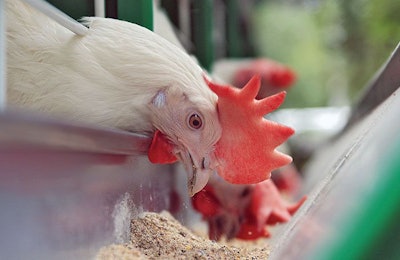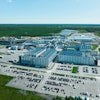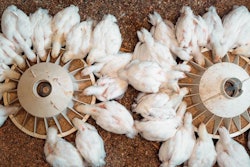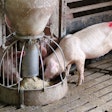
Marcos Rostagno of Pytobiotics North America talks about how feed additives can be used to mitigate heat stress in poultry.
PODCAST: How to identify, mitigate heat stress in poultry (13:07)
Ann Reus: Hello and welcome to the Feed Strategy podcast. I’m your host, Feed Strategy staff reporter Ann Reus. Today, I’m talking with Marcos Rostagno. He is business operations leader at Pytobiotics North America, which manufactures and distributes feed additives and organic trace minerals for poultry, swine, ruminants and crops. He’s here to talk about how feed additives can be used to mitigate heat stress in poultry. Hi Marcos, good to have you here.
Rostagno: Hi, there. Thank you for having me.
Reus: Can you start by explaining how heat can affect poultry? What are some of the signs that a bird is suffering from heat stress?
Rostagno: Yes. That’s a good question. It’s very broad, and it’s not just poultry, of course, our main area of focus has been poultry. But heat stress is a common stressor that affects multiple species. But in the case specifically of poultry, there are multiple, I will say, angles of effect. So it can affect not only the, starting in general and broad, as a welfare issue. So it creates a stress response. That’s why I call it a stressor. Stress is a biological response of the body to anything that threatens or affects its equilibrium, or the homeostasis. And so it is very important in that the stress response is what we’re going to observe with these birds. So you’re going to have effect, for instance, in the behavior of these animals is going to change and we’re going to explain a little bit more about it today. It will affect also the general immunology of this bird and how the cells and immune system operates in these animals under that condition. It affects their digestive system as well, affects the digestive system from the physiological, immunological and microbiological point of view. And, of course, there are a lot of consequences that we’re going to explore here today.
Reus: So this has been a hot summer in much of the Northern Hemisphere is climate change, increasing the occurrence or severity of heat stress?
Rostagno: Well, it’s hard for us, it’s a very sensitive topic nowadays. But it’s hard for us in our own lifespan to be able to pick up those differences to tell those differences. But we do know that there are some changes, in climatic changes, and environment is changing for a variety of reasons. And then of course, it will depend on first where the poultry production is located. Of course, some regions will be more affected than others. In general, the poultry production, the broiler production that I work mostly with, is characterized for being located in mostly regions that do have some issues with heat waves or heat seasons. And so you look at the south of the U.S., tropical regions like Latin America, the Middle East, or some countries in Asia. So, I don’t know if it’s a consequence or not, specifically, of the climate change. But we’ve been seeing more and more about these effects. Of course, industry starts paying more attention to anything that affects its efficiency or its production. So, it’s another confounding that we have if it is happening more in reality, or is happening more because our perception, or we are paying more attention to it. But, of course, in that specifically in the case of climatic changes, I think it’s becoming more important. When we talk, for instance, what we call alternative production systems where birds have access to the environment to outside of the barns, because the production barns we can control, more or less, the temperature, the humidity, the air movement. Keep in mind heat stress is a combination of all these factors. It’s not just, people tend to think of heat stress, only high temperature. It’s not just the temperature, sometimes the temperature does not have to be too high, because it’s combined with high humidity or there is poor ventilation or failures in ventilation systems that leads to a heat stress is how the birds will perceive it. So there will be failures with birds created in controlled environments. But we do have more modern production systems in layers, in broilers in some cases, where we’ll have free ranges, things like that, of course, they’re going to be much more exposed to climatic conditions. And if they change, of course, we’re going to have more issues.
Reus: So you mentioned feed efficiency. Does heat stress affect feed conversion ratio and therefore the bottom line?
Rostagno: Yes, different ways. Of course, nothing is simple when we talk about heat stress. First, you have to understand that it’s not experienced the same way by every single bird in a flock. It depends how they perceive it, how they experience it, depending on where that where their tolerance to that temperature, changes in temperature, humidity or ventilation happen all the way to where they are located in the barn, and so forth. But, in general, you’re going to have several effects. And whenever you have effects and the GI tract or the gastrointestinal tract or the intestinal tract of this birds, you will, of course, have an effect on the efficiency of using the main input of production, which is feed. So, for instance, you will have a very direct effect in birds, whenever they’re subjected to heat stress conditions, the first thing that’s going to happen is they’re going to reduce drastically – depending on the intensity, of course, of the heat stress — they’re going to reduce the feed intake. And once you reduce feed intake, then it starts chain effects in the intestinal tract of these birds. But yeah, there are some studies showing also a reduction in the secretion of enzymes in the digestive system, which of course will affect the digestibility and efficiency of using the nutrients or extracting nutrients from the feed. Because of that, just as an example, nutritionists will know that in certain times of the year, or certain periods where they are likely to experience heat waves or summer, things like this, they will change to adapt the formulation of the diet to try and counterbalance a little bit of these effects. But there is always some negative impact.
Reus: So how can feed additives be used to mitigate heat stress and how do they work?
Rostagno: Well, that’s again a very complex topic. There are a variety of products that can contribute to that, from not only stimulating, like I said, increase secretion of enzymes to try to counterbalance that fact, to rehydrating birds, offering different nutrients, minerals, and so forth. Also, some others help to protect the intestinal tract. We know that heat stress also causes not only oxidative stress, inflammation, some of these feed additives will try to minimize those effects of the birds. But it’s just with the feed additives are very important. There are a magnitude of them out there, and more and more we’ve seen in the market. But to deal with heat stress, you have to go beyond that, for instance, right now, we already talked about two them, right? Adapt the diet, but we also talk about feed additives. Then there is the water supply, what’s the temperature of the water availability and temperature of the water. There is the management, the density, the population density, you’re going to apply during those periods of higher temperature, for instance, in the summer, or also management practices in terms of controlling the environment, better monitoring, ventilation systems, or some regions of the world is very common for the use of sprinkler systems on the roof of the barn. And so, just giving you a sense of the broader approach that has to be adopted whenever we want to deal with heat stress.
Reus: Yeah, so it’s a combination of all of those things put together that is the best result. So going back to the different kinds of housing systems that you mentioned, what do you see as being the most successful? And then how can the other types of housing systems apply different means to kind of mitigate the effects of heat stress that might be harder on those birds?
Rostagno: Yeah, again, I wouldn’t say there is one system that is more successful because of the combination of factors that we just mentioned. So it’s going to be different factors will have different importance or impact, depending on the conditions. For instance, older housing systems are less efficient, for instance, on moving air in the ventilation process, or they are not there they are not capable of protecting the birds from the sun effect, or stuff like this. And of course, they will require much more attention to management and other factors to counterbalance. More modern systems apply a lot more engineering controls and more efficient ventilation systems, more controls that are easy to monitor, sometimes even at a distance so you can quickly detect. And remember, there is always a human factor there, which is how quickly can a production manager or a veterinarian, whoever is responsible for watching over that production flock or complex or unit, how quickly that person can identify the problem. Of course, we try to anticipate, but sometimes it starts before we adopt any measurements. We can’t, unfortunately, control the environment in the climatic conditions. So, detection is very important. How quickly, how good are those individuals in identifying changes, for instance, in feed intake, or changes in water intake or changes in behavior of these birds. These birds are going to change their behavior, they’re going to try to look for areas that are cooler in the barn. Or they’re going to try to spread themselves instead of staying bundled up, right, which is the opposite when it’s cold, or they’re going to keep trying to keep their wings open more often, because that’s where they can exchange. Remember, the birds are covered with feathers. So they have very few unfeathered surfaces to exchange heat with environment to try to lower the body temperature. They are going to do something that is very common, which is a panting, which is staying with their beak open, shortening the frequency, but increasing the number of times they breathe to try and exchange more air into the air sacs and therefore to control temperature. So it’s more, I would say, it’s not so much different facilities or production systems will be more efficient in controlling heat stress. But I think it’s much more, how quickly the production, the people that are responsible, the managers and so forth, how quickly they respond to this and how well they know to adapt to the situation.
Reus: Well, that’s all great information, Marcos. Thank you.
Rostagno: Excellent. I’m glad that I can contribute. I think it’s a very important topic. It’s growing in interest, as I said, naturally, because we pay more attention or because the industry is becoming more competitive and you have to minimize your losses. So you have to apply interventions as quickly as possible. But bottom line is, we need to be alert we need to try to anticipate and to monitor. The closer we watch the birds, the quicker we can identify when problems like these happen. And I think it is very important and it’s growing more in attention.
Reus: Yeah, good points. Well, I’d also like to thank the audience for listening, and remember, you can subscribe to the Feed Strategy podcast and listen to past episodes on Apple, Spotify, Google, Anchor, RadioPublic and Breaker.















